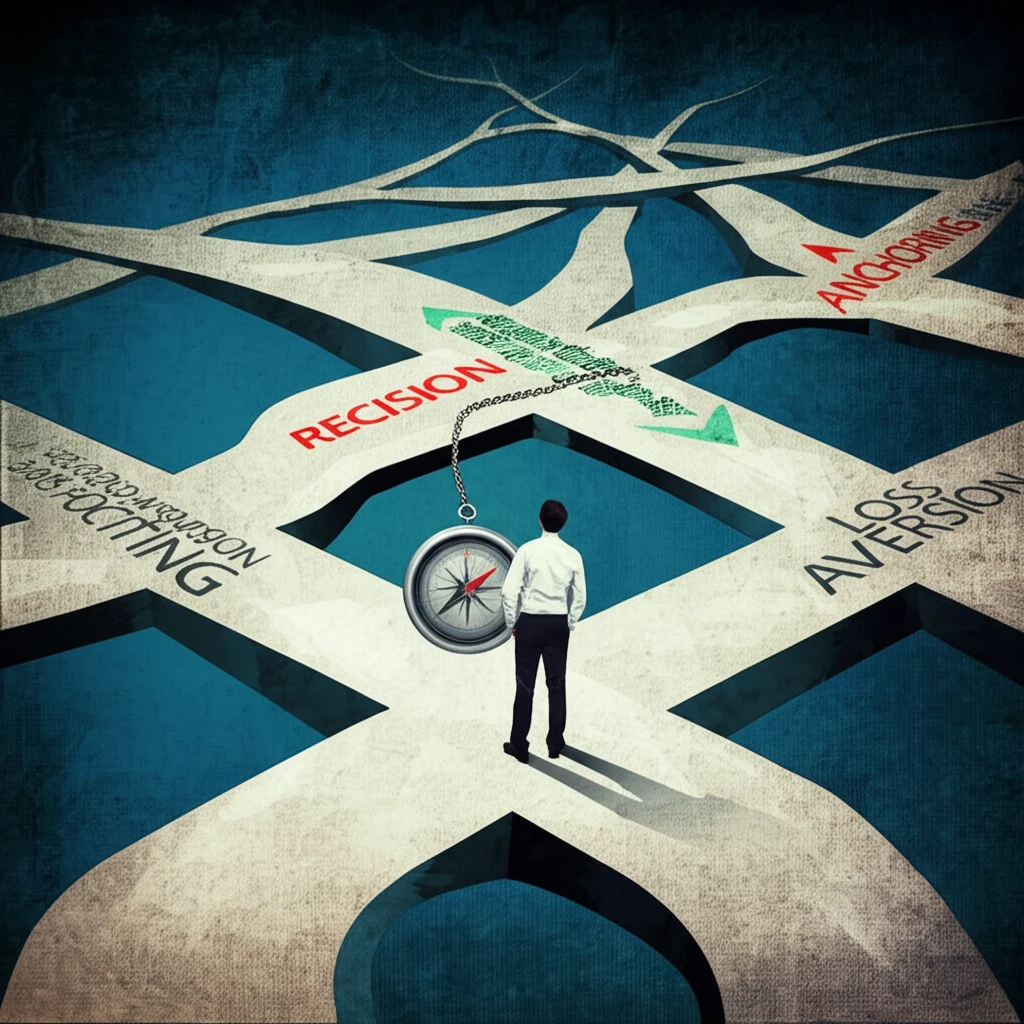
Decoding Behavioral Economics: How Understanding Bias Can Improve Your Life
"Explore the fascinating world of behavioral economics and learn how to recognize and overcome common biases that affect decision-making."
Have you ever wondered why you make certain decisions, even when you know they might not be the best for you? Perhaps you've bought something on impulse, stuck with a losing investment for too long, or struggled to start saving for retirement. These aren't signs of irrationality, but rather demonstrations of the subtle yet powerful forces of behavioral economics in action.
Traditional economics assumes that people are rational actors who always make decisions that maximize their self-interest. However, behavioral economics recognizes that real people are often influenced by cognitive biases, emotions, and social factors. Understanding these influences can give you a significant edge in navigating the complexities of life.
This article will explore the key concepts of behavioral economics in an accessible and engaging way. We will uncover the most common biases that affect our decision-making, from the anchoring effect to loss aversion, and provide practical strategies for mitigating their impact. Get ready to transform the way you think about choices, money, and the world around you!
Unveiling the Biases: How They Shape Your Choices

Behavioral economics has identified a range of cognitive biases that systematically influence our judgments and decisions. These biases are mental shortcuts that our brains use to simplify complex information, but they can often lead us astray.
- Anchoring Bias: The tendency to heavily rely on the first piece of information received (the "anchor") when making decisions, even if that information is irrelevant. For example, if you see a sweater initially priced at $100 marked down to $75, you might perceive it as a great deal, even if $75 is still more than you would normally pay.
- Loss Aversion: The tendency to feel the pain of a loss more strongly than the pleasure of an equivalent gain. This can lead to risk-averse behavior, such as holding onto a losing investment for too long in the hope of breaking even.
- Confirmation Bias: The tendency to seek out and interpret information that confirms your existing beliefs, while ignoring or downplaying contradictory evidence. This can make it difficult to change your mind, even in the face of overwhelming evidence.
- Availability Heuristic: The tendency to overestimate the likelihood of events that are easily recalled, such as those that are vivid, recent, or widely publicized. This can lead to irrational fears, such as being more afraid of flying than driving, even though driving is statistically more dangerous.
- Framing Effect: The way information is presented can significantly influence our decisions, even if the underlying facts are the same. For example, a medical treatment described as having a "90% survival rate" is more appealing than one described as having a "10% mortality rate," even though they convey the same information.
Taking Control: Strategies for Smarter Choices
While cognitive biases are deeply ingrained in our thinking, they are not insurmountable. By understanding these biases and implementing simple strategies, you can make more rational and informed decisions in all areas of your life. Consider taking a moment to pause and reflect on your decision-making process before making a purchase.
